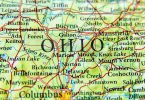This has been a trying couple of weeks for the U.S. The East Coast was battered by Hurricane Sandy and a nail-biting presidential election finally came to an end this week. While neither of these events is directly related to public relations or the communications field, both made quite the impact across multi-media channels.
In this week’s PRSA “Friday Five” post — an analysis of the week’s biggest public relations and business news and commentary — we take a look at how the 2012 presidential campaign lent its expertise to marketing and we discuss how Hurricane Sandy took social media by storm.
Hey, Mr. President! Does This Mean You Can Stop Assaulting Me With Messages Now? (MediaPost)
We can see the organic nature of social media in moments like that on Twitter, when 600,000 people retweeted the world record breaking tweet “four more years,” and through the image posted on Facebook of the President hugging the First Lady in celebration, which drew 3.46 million likes and 446,044 shares. However, moments like the re-election of President Obama stem from much more than organic user-driven content. MediaPost’s Steve Smith takes a closer look at how target marketing used during the 2012 presidential campaign potentially shaped attitudes toward the message. The Obama campaign sent messages upon messages using SMS and email as part of their “marketing mastery”. Smith found that despite his annoyance with the over abundance of messaging, there is evidence that proves the inundation of messages actually worked but at what cost. One of the issues that Smith raises is that while targeted messaging can be used as heavy artillery in the game of persuasion, it can also come across as impersonal and inadvertently turn people off. Read more from Smith on this personal account of being on the receiving end of target marketing.
What Marketers Can Take From the Presidential Campaigns’ Best Tactics (Ad Age)
Ad Age’s Antony Young offers some key takeaways that brands can learn from the 2012 presidential campaign.
- Focus on your swing voters. Both candidates this year spent a large chunk of their media dollars in the battleground states. They were also careful about choosing their audience when it came to airing various TV placements. For marketers, be aware of your target audience and look for opportunity to draw in new consumers.
- Remember your ground game. Taking the time out to make it personal can go a long way in maintaining good relationships with a long standing audience and building new relationships with potential brand advocates. According to the Obama campaign, this was a successful tactic as they reached 125 million voter contacts through personal outreach.
- Video still works. Obama outspent Romney in TV and there was also an increase in online video spending which supports the use of TV and online video for marketing purposes.
The 3 Biggest Social Media Takeaways From Election 2012 (Ragan’s PR Daily)
It doesn’t take much for social media to insert itself into the major happenings taking place worldwide. This year is certainly no exception and with the 2012 presidential campaign over, PR Daily’s Kevin Allen takes a look some of the more prominent learnings that came from this campaign. Here is a teaser of Allen’s three biggest social media lessons:
- Tumblr is a viable platform to activate a younger demographic. Obama’s team saw enormous opportunity in Tumblr. They engaged users through their story and remained active on the microblogging platform throughout the entirety of the campaign. This was the team’s way of endorsing Obama through “highly shareable social elements” such as a tweet from Lady Gaga and even a kitty cat graphic urging people to vote.
Map: How New York Tweeted During Hurricane Sandy (Fast Company)
No surprise that during Hurricane Sandy, New York was the unofficial social public announcement system with its enormous presence on Twitter providing a play by play of all things Sandy related. Floating Sheep, a site dedicated to mapping and analyzing user generated geocoded data, created a map of geotagged tweets that went out before and after the storm and found New Yorkers to be the most vocal during this time period. Some of the bigger events, like the crane dangling on 57th street, explosions and evacuations seemed to strum up more noticeable responses. One interesting thing that Floating Sheep pointed out was that while Twitter seems to be closing the gap in affluence, showing solid tweet representation across all areas including those categorized as lower-income, there were only five tweets that referenced the hurricane in Spanish, meaning that Twitter may still be lacking in terms of demographic reach.
Sandy Really Was Instagram’s Moment: 1.3 Million Pics Posted (Mashable)
Hurricane Sandy blew up Instagram with a Sandy-tagged photo total of 1.3 million. Instagram CEO Kevin Systrom said Monday that users snapped 800,000 photos tagged with #Sandy. There was also #hurricanesandy and #Frakenstorm. The company is now looking for a way to categorize these photos in a way that allows them to pick out the most interesting ones. According to Systrom, the recent Sandy explosion on Instagram will push the company into the big data company future. Is Instagram ready for this evolution?
Nicole Castro is the public relations associate at the Public Relations Society of America.






